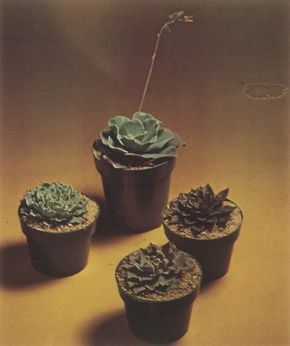Preventing Cacti Pests and Diseases
Occasionally, cacti and succulents may become afflicted by a variety of pests or diseases.
This section will help you learn about what types of pests and diseases can attack your plant and how to deal with these problems.
Advertisement
After people, the most frequent pests are mealybugs, nematodes and scale. If you get nematodes, remove all the soil from the roots and repot using pasteurized soil or mix. For mealybugs and scale, depending on the number of spines the plant has, a good scrub with an old toothbrush and warm soapy water can do wonders.
If you are using chemical sprays, read the label very carefully since some popular sprays, such as malathion, can injure succulents as much as the pest.
The most serious diseases are rots. Rots can be aggravated by improper watering, forcing growth during periods of dormancy, and wounding plants when repotting.
Sometimes the plant can be saved by cutting out and removing material one-half inch beyond the area that looks decayed. The wound should be washed with a solution of one part household bleach and nine parts water.
The plant should be kept in intensive care in an area of low humidity until it recovers. Unless it is special, get rid of it.
Choosing the correct size pot and type of soil are essential for the survival of your cactus or succulent plant. The next section will teach you everything you need to know about correctly potting your cactus or succulent plant.
